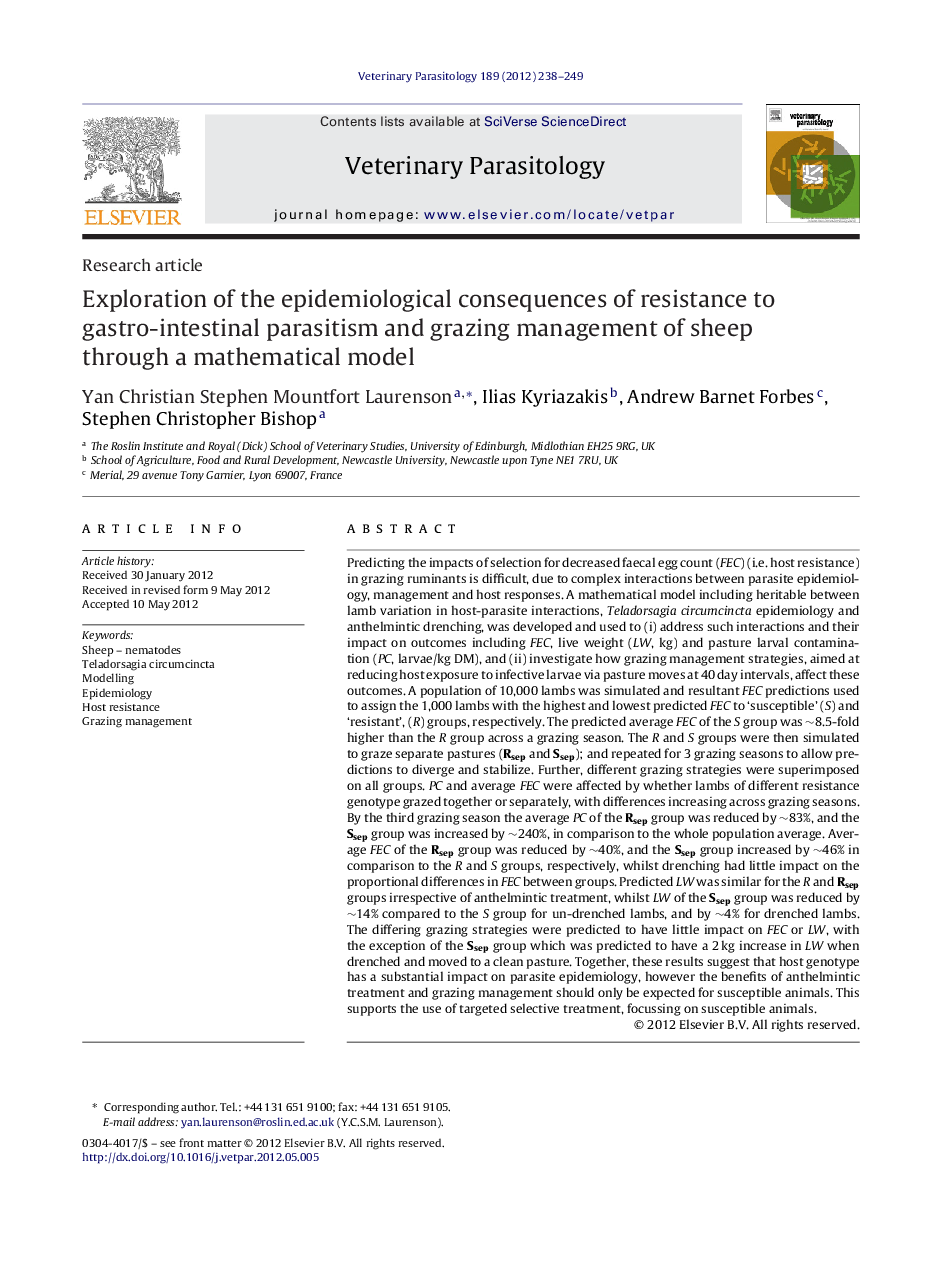| کد مقاله | کد نشریه | سال انتشار | مقاله انگلیسی | نسخه تمام متن |
|---|---|---|---|---|
| 5804820 | 1555709 | 2012 | 12 صفحه PDF | دانلود رایگان |

Predicting the impacts of selection for decreased faecal egg count (FEC) (i.e. host resistance) in grazing ruminants is difficult, due to complex interactions between parasite epidemiology, management and host responses. A mathematical model including heritable between lamb variation in host-parasite interactions, Teladorsagia circumcincta epidemiology and anthelmintic drenching, was developed and used to (i) address such interactions and their impact on outcomes including FEC, live weight (LW, kg) and pasture larval contamination (PC, larvae/kg DM), and (ii) investigate how grazing management strategies, aimed at reducing host exposure to infective larvae via pasture moves at 40 day intervals, affect these outcomes. A population of 10,000 lambs was simulated and resultant FEC predictions used to assign the 1,000 lambs with the highest and lowest predicted FEC to 'susceptible' (S) and 'resistant', (R) groups, respectively. The predicted average FEC of the S group was â¼8.5-fold higher than the R group across a grazing season. The R and S groups were then simulated to graze separate pastures (Rsep and Ssep); and repeated for 3 grazing seasons to allow predictions to diverge and stabilize. Further, different grazing strategies were superimposed on all groups. PC and average FEC were affected by whether lambs of different resistance genotype grazed together or separately, with differences increasing across grazing seasons. By the third grazing season the average PC of the Rsep group was reduced by â¼83%, and the Ssep group was increased by â¼240%, in comparison to the whole population average. Average FEC of the Rsep group was reduced by â¼40%, and the Ssep group increased by â¼46% in comparison to the R and S groups, respectively, whilst drenching had little impact on the proportional differences in FEC between groups. Predicted LW was similar for the R and Rsep groups irrespective of anthelmintic treatment, whilst LW of the Ssep group was reduced by â¼14% compared to the S group for un-drenched lambs, and by â¼4% for drenched lambs. The differing grazing strategies were predicted to have little impact on FEC or LW, with the exception of the Ssep group which was predicted to have a 2Â kg increase in LW when drenched and moved to a clean pasture. Together, these results suggest that host genotype has a substantial impact on parasite epidemiology, however the benefits of anthelmintic treatment and grazing management should only be expected for susceptible animals. This supports the use of targeted selective treatment, focussing on susceptible animals.
Journal: Veterinary Parasitology - Volume 189, Issues 2â4, 26 October 2012, Pages 238-249